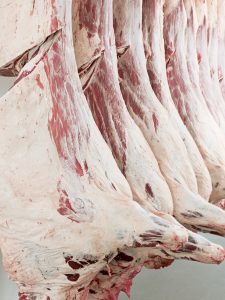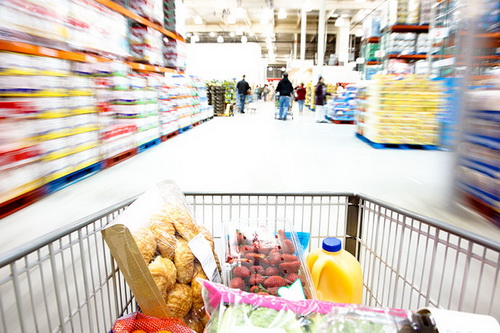



Weekly beef and dairy digest: Australia's meat exports repeatedly fail safety inspections
The US FSIS has rejected 10 meat shipments from Australia last year due to contamination, and economic forecasts predict inflating food prices.US beef export sales improve in latest week
US beef net sales of 19,200 metric tonnes (M)T reported for 2021 were up noticeably from the previous week and up 39% from the prior four-week average. Increases were primarily for South Korea (6,200 MT, including decreases of 500 MT), China (4,500 MT, including decreases of 200 MT), Japan (2,800 MT, including decreases of 600 MT), Mexico (2,100 MT, including decreases of 100 MT), and Taiwan (1,700 MT, including decreases of 100 MT). Net sales of 5,000 MT for 2022 were primarily for South Korea (4,100 MT), Indonesia (500 MT), and Japan (200 MT).
Exports of 16,700 MT were down 2% from the previous week, but unchanged from the prior four-week average. The destinations were primarily to South Korea (4,700 MT), Japan (4,000 MT), China (3,500 MT), Mexico (1,200 MT), and Taiwan (1,000 MT).

Emerging report: rise in US rejections of contaminated meat from Australia
USDA’s Food Safety and Inspection Service (FSIS) rejected 10 shipments of meat from Australia in 2020 due to contamination with feces or other digestive matter, up from one in 2019 and four in 2018, according to internal USDA data reviewed by Reuters. By contrast, Canada and New Zealand had only one shipment each rejected due to contamination, with Mexico having none.
For the first two months of 2021, the data showed three shipments of Australian meat had been rejected for the same reasons with none for Canada and Mexico, the data showed. Reuters said USDA did not provide more-recent information when asked.
The contaminated shipments were from JBS Australia, Thomas Foods, Fletcher International Exports, Australian Lamb Co, and V&V Walsh, Reuters said, indicating they cross-referenced internal data with publicly available information. FSIS further noted that only 0.6% of meat physically examined in 2020 was rejected.

US food prices for several grocery store items on the rise
USDA forecasts for US grocery store meat prices in 2021 were revised up again this month by its Economic Research Service (ERS), with prices for the combined category of meats, poultry and fish now seen up 4.5% to 5.5%, up from 4% to 5% last month.
Meat prices are forecast to rise 5.5% to 6.5%, up from 4.5% to 5.5% in September. Contributing to the increase is what are now expected to be 6.5% to 7.5% higher beef prices compared with an increase of 45% to 6% last month. Pork prices are now expected also be up 6.5% to 7.5% from 2020 levels, up slightly from the forecast range in September of 6% to 7%. Poultry prices are forecast to rise 3.5% to 4.5% versus 3% to 4% in September.
Beef and veal prices have gone up 6.5% so far this year versus the same period in 2020, with prices in September up 17.6% from year-ago. Pork prices are up 6.3% so far in 2021 vs the same period in 2020 and in September, prices were up 12.7% from year ago. Poultry prices are up 3.8% so far this year compared with the same period in 2020, with prices in September up 6.1% from September 2020.
“Prices have been driven up by strong domestic and international demand, labor shortages, supply chain disruptions, and high feed and other input costs,” USDA said.

“Winter storms and drought impacted meat prices this spring, and processing facility closures due to cybersecurity attacks impacted beef and other meat production in May.” Interestingly, USDA economists also noted, “Consolidation in the meat industry could also have an effect on prices.” However, the level of consolidation has not changed that much in recent years and prices for meat rose 1.3% in 2019 after rising 7.4% in 2020, but they only rose 0.4% in 2018 and actually declined in both 2016 and 2017.
Grocery store price forecasts for 2021 were also increased for fish and seafood, eggs and fats and oils compared with the outlook in September. “Low imports, labor shortages, and strong domestic demand, particularly within the foodservice sector, have increased prices,” USDA said.
Overall food price inflation is put at 3% to 4% for 2021, with restaurant (food away from home) prices seen rising 3.5% to 4.5% while grocery store (food at home) prices are seen increasing 3.5% to 4.5%. All three forecast ranges are steady with month ago. It takes considerable movement in food price categories to raise the overall food price inflation outlook. USDA has only increased its forecast of all food prices in 2021 twice — June and August — since their initial forecast for a 2% to 3% increase that was issued in July 2020.
USDA’s weekly US dairy market report
Fluid milk
In most areas of the nation, milk production is increasing off farms. There are reports milk availability is slightly tight in areas of the Northeast. Manufacturers of milk output is up in parts of the West region, although Pacific Northwest fluid milk contacts relay milk supplies are somewhat lighter. Bottling demands are mostly steady.
Seasonal retail products, like eggnog and aerated cream, have increased production schedules for customers’ demands. Cream markets are stable. Internal cream supplies are meeting the needs of some end users. Cream prices have increased in the Central and Eastern region.
Condensed skim availability and volumes are steady to lighter in the country. FOB cream multiples are 1.32-1.45 in the East, 1.31-1.39 in the Midwest, and 1.05-1.35 in the West.
Dry products
Low and medium heat non-fat dry milk (NDM) prices heightened in all regions. Western industry contacts note international demands are strengthening. Spot load availability is mixed in the United States. High heat prices are mostly higher. NDM markets are bullish.

Dry buttermilk prices moved higher. A plant fire in the Western region has created some unsettledness, as buttermilk solids/ powders were fairly limited even before the incident. Dry whole milk prices are steady on limited trading activity. Dry whey prices are mixed. International interests remain healthy, but port/freight congestion are impacting potential export opportunities.
Whey protein concentrate 34% prices are steady to slightly higher on the top of the range. WPC34% markets are steady to firming. Lactose prices are steady to slightly lower. Demand for carbohydrates is noted as unstable. Casein prices are currently steady on steady to bullish market tones.
Organic dairy market news
Federal Milk Market Order 1, in New England, reports utilization of types of organic milk by pool plants. During September 2021, organic whole milk utilization totaled 14.1 million pounds, up from 12.4 million pounds the previous year.
Butterfat content, 3.30%, improved from the 3.29% the previous year. The September 2021 utilization of organic reduced fat milk, 16.2 million pounds, declined from the 17.3 million pounds a year earlier. The butterfat content for organic reduced fat milk, 1.40%, declined from 1.55% the previous year.
Total organic dairy retail advertisements declined 34% this week. By commodity, retailers announced fewer ads for organic milk, –39%, and organic yogurt, –21%. By pack size, organic yogurt 32-ounce retail ads declined 61%, 16-ounce organic butter ads dipped 50% and organic half gallon milk retail ads fell 36%. The Northwest and Hawaii were the only regions to expand organic dairy ads, 25 and 100%, respectively.

National retail report
Total conventional dairy ads increased 9% from last week, but organic dairy ads are down 34%. Ads for conventional ice cream in 48-to-64-ounce containers are up 10% from last week. The national weighted average advertised price for conventional ice cream in 48-to-64-ounce containers is $3.02, 13 cents less than last week. The national weighted average advertised price for butter in a 1-pound package is $3.21, up 36 cents from $2.85 last week.
TheCattleSite News Desk
IMPORTANT NOTE: I am not a futures broker and do not manage any trading accounts other than my own personal account. It is my goal to point out to you potential trading opportunities. However, it is up to you to: (1) decide when and if you want to initiate any traders and (2) determine the size of any trades you may initiate. Any trades I discuss are hypothetical in nature.
Here is what the Commodity Futures Trading Commission (CFTC) has said about futures trading (and I agree 100%): 1. Trading commodity futures and options is not for everyone. IT IS A VOLATILE, COMPLEX AND RISKY BUSINESS. Before you invest any money in futures or options contracts, you should consider your financial experience, goals and financial resources, and know how much you can afford to lose above and beyond your initial payment to a broker. You should understand commodity futures and options contracts and your obligations in entering into those contracts. You should understand your exposure to risk and other aspects of trading by thoroughly reviewing the risk disclosure documents your broker is required to give you.




